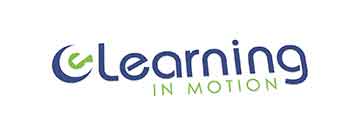In this post I would like to explore one of the current learning theories that you can implement in your eLearning. In time, I will discuss other theories that instructional designers lean on to make eLearning educational materials that support learning. It is undeniable that technology has made education easily accesible to many. Not only that, the resources needed to learn and master any skill are readily available on the web in the form of webpages, videos, files, audio, and social media. This exploded once smartphones came into the market, now we all have a computer in our pockets.
Table of Contents
- Introduction
- What is Connectivism Learning Theory? How It Helps eLearning
- Key Concepts of Connectivism Learning Theory
- Examples of Connectivism Learning Theory for eLearning
- References to Further Reading
- Conclusions
Instructors have to deal with the intrusion of this technology in the classroom. It is not possible to ignore that students rather do research on the web than in a library. That instead of asking a teacher, they look for the answer on YouTube. So, how are these instruictors preparing for this? This is where connectivism learning theory comes to address the issues generated by technology in the classroom.
Introduction
In medical education, the use of eLearning must be based in sound learning theories. In my experience as an instructional designer for a medical education program, the implementation of hybrid learning involved an eLearning component that needed a theoretical support. In our case, we resorted to constructivism theory, which we can cover in some other post. Today we will talk about connectivism theory, as it relates to eLearning. Honestly, constructivism theory is not the only one you can base your eLearning on, in particular in medical education. It is clear that learning is a continuous process that occurs in every aspect of our lives, from birth to death. But with the advent of technology, there has been a significant shift in how we learn and acquire knowledge. For example, eLearning is now extensively used as a mode to deliver learning through multimedia and electronic means.
Connectivism Learning Theory tries to explain how learning takes place in the digital age. This theory proposes that learning is the process of connecting specialized nodes or information sources in a network of knowledge. This is particularly true in eLearning, since these connections can happen almost instantaneously (social media, for example). Like I mentioned, we will deal with Connectivism Learning Theory, its key concepts and examples of how it works. I will include references at the end of this post, if you are interested in further reading about this theory.
What is Connectivism Learning Theory? How It Helps eLearning
Connectivism is a learning theory developed by George Siemens and Stephen Downes in 2005. It is based on the premise that knowledge is distributed across a network of connections, and learning is the process of creating and navigating those connections. This theory acknowledges the role of technology in facilitating connections between learners, instructors, and resources. This is the part where eLearning enters the pciture. In connectivism, learning occurs through the process of creating connections between various information sources, including people, digital tools, and technologies. And learning management systems (LMS) are ideal to facilitate these connections.
Key Concepts of Connectivism Learning Theory
Connectivism Learning Theory is based on the following key concepts:
- Nodes and Connections: The nodes represent the various sources of information, and the connections represent the links between these sources. In Connectivism, learning occurs through the process of creating and navigating these connections.
- Distributed Knowledge: Connectivism recognizes that knowledge is not confined to a single individual or location. Instead, it is distributed across a network of connections.
- Social Learning: Connectivism recognizes the importance of social interaction in the learning process. It acknowledges that learners can learn from each other, and that knowledge creation is a social process.
- Digital Tools and Technologies: Connectivism recognizes the role of digital tools and technologies in facilitating connections between learners, instructors, and resources.
Examples of Connectivism Learning Theory for eLearning
The following examples illustrate how the Connectivism Learning Theory works in practice:
- MOOCs (Massive Open Online Courses): MOOCs are online courses that are available to anyone with an internet connection. They provide an opportunity for learners to connect with instructors and other learners from around the world. MOOCs are an example of how technology can facilitate connections between learners, instructors, and resources.
- Social Media: Social media platforms, such as Facebook, Twitter, and LinkedIn, provide a space for learners to connect with each other and share knowledge. These platforms can also be used by instructors to facilitate discussions and share resources.
- Personal Learning Networks (PLNs): Personal Learning Networks are networks of individuals, resources, and technologies that learners use to create connections and acquire knowledge. PLNs can be created through social media, blogs, online communities, and other digital tools.
References to Further Reading
If you are interested in learning more about Connectivism Learning Theory, the following resources may be helpful:
- Siemens, G. (2005). Connectivism: A Learning Theory for the Digital Age. International Journal of Instructional Technology and Distance Learning, 2(1), 3-10.
- Downes, S. (2012). Connectivism and Connective Knowledge. In Theoretical Principles of Distance Education (pp. 143-156). Routledge.
- Kop, R. (2011). The challenges to connectivist learning on open online networks: Learning experiences during a Massive Open Online Course. The International Review of Research in Open and Distributed Learning, 12(3), 19-38.
Conclusions
Connectivism Learning Theory acknowledges the role of technology in facilitating connections between learners, instructors, and resources. And it can accomplish this through eLearning, particularly using a LMS to promote the creation of these connections. It recognizes that knowledge is distributed across a network of connections, and that learning occurs through the process of creating and navigating those connections. Examples of how this theory works in practice include MOOCs, social media, and Personal Learning Networks (PLNs). MOOCs provide learners with access to online courses and an opportunity to connect with other learners and instructors from around the world. Social media platforms allow learners to connect and share knowledge with each other, and instructors can use these platforms to facilitate discussions and share resources. PLNs are networks of individuals, resources, and technologies that learners use to create connections and acquire knowledge.
Overall, Connectivism Learning Theory provides a framework for understanding how learning occurs in the digital age. It recognizes the importance of technology in facilitating connections between learners, instructors, and resources, and emphasizes the role of social interaction in the learning process. By creating and navigating connections between various sources of information, learners can acquire knowledge and develop the skills they need to succeed in the 21st century.
If you would like to receive notifications and access to exclusive content, sign up to our mailing list using the form in this page. Like and share this post. Leave a comment using the form below. Thank you.


